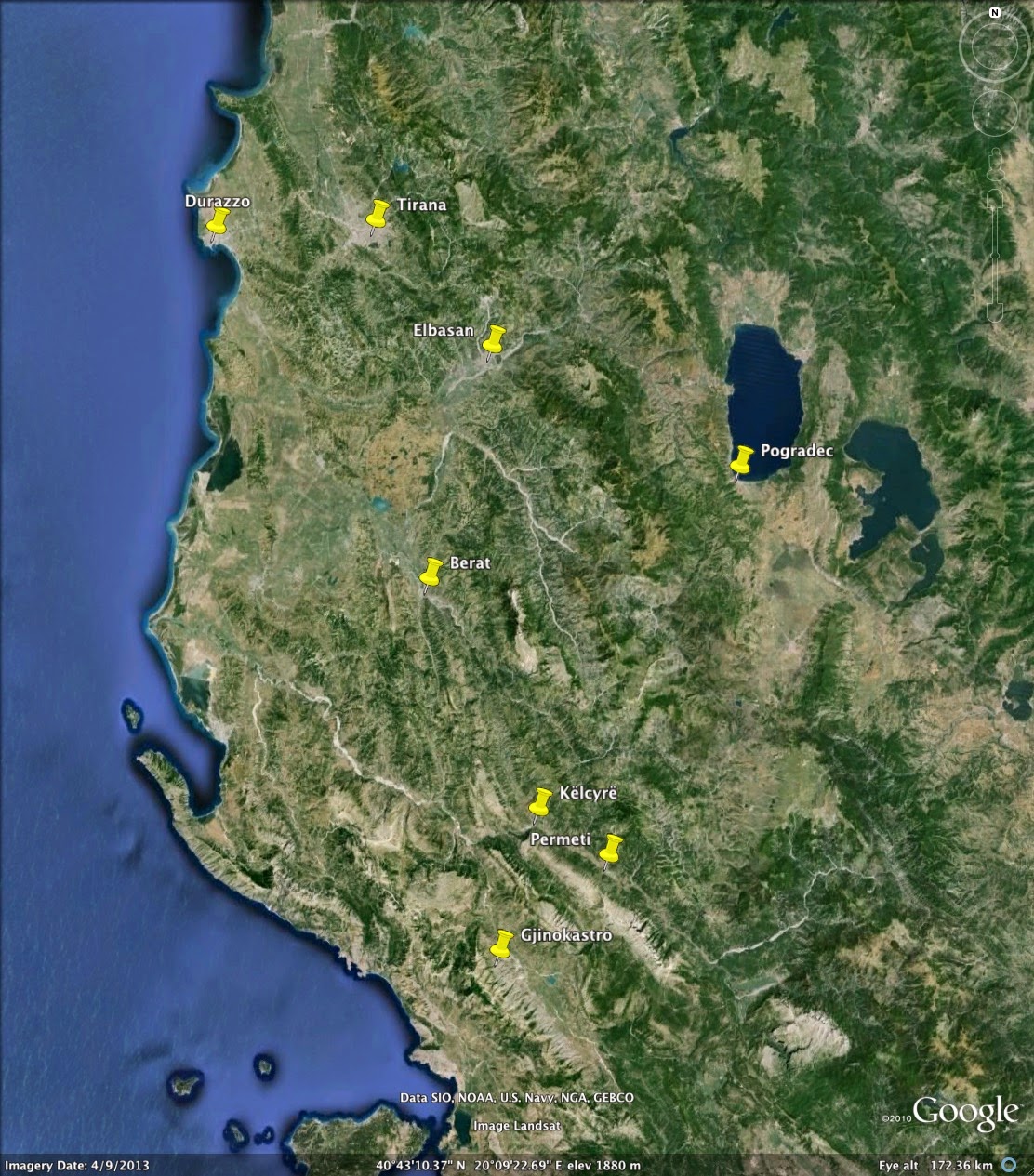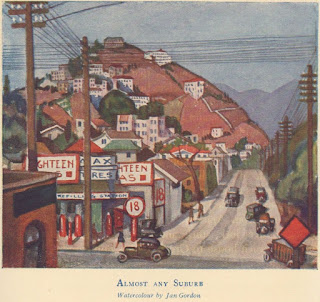Jan and Cora Gordon: Who was "K"?
On a quiet Sunday afternoon, rereading Jan Gordon's "GRADUS AD ... MONTPARNASSUM" (Blackwood's, March 1929, under his "Salis" pseudonym) I wondered who the character known only as "K" might be.
The text states that, "K --- has since climbed to eminence, the button of the legion of honour, the front page of a great daily, poems in profusion, and a number of plays; but in those days he clung to a paper which hung on the edge of bankruptcy, and was the author of one slim book of verse in praise of opium dreams, a long way after Baudelaire."
"K" chose Jan and Cora Gordon to exhibit their work at the art gallery of a fashionable photographer he "had been of service to", referred to in the text as "M". The show "was noticed favourably" and Cora sold (to a diplomat, perhaps Paul Morand) "a big exuberant drawing in colour of the Cleopatra-cum-anachronism period."
Jan Gordon was not convinced that "K" was particularly impressed with their art, but "Claribel's [Cora Gordon's] exotic drawings stimulated the imagist side of his nature", while Jan - ""Voyager dans les Indes comme un heros de Kipling," to quote from his preface - had a glamour."
The text states that, "K --- has since climbed to eminence, the button of the legion of honour, the front page of a great daily, poems in profusion, and a number of plays; but in those days he clung to a paper which hung on the edge of bankruptcy, and was the author of one slim book of verse in praise of opium dreams, a long way after Baudelaire."
"K" chose Jan and Cora Gordon to exhibit their work at the art gallery of a fashionable photographer he "had been of service to", referred to in the text as "M". The show "was noticed favourably" and Cora sold (to a diplomat, perhaps Paul Morand) "a big exuberant drawing in colour of the Cleopatra-cum-anachronism period."
Jan Gordon was not convinced that "K" was particularly impressed with their art, but "Claribel's [Cora Gordon's] exotic drawings stimulated the imagist side of his nature", while Jan - ""Voyager dans les Indes comme un heros de Kipling," to quote from his preface - had a glamour."
"K" is here referring to Jan Gordon's sojourn in the Malay Peninsula (which I wrote on here).
"K" was clearly a highly creative individual since, wrote Jan Gordon, "he surrounded me in his exuberant fancy with tigers and boa-constrictors, thrust me into the arms of impossible ebony Cleopatras and rooted a whirlwind admiration of my present in the illusion of my past."
Passages like this together with the information above on "K"'s later achievements in his eminence initially suggest (although there are some inconsistencies) the name Jean Cocteau. Cocteau was involved with the six issues of Schéhérazade published between November 1909 and March 1911. "K" seems to have a wife in Jan Gordon's account, which makes me think (as a possible explanation) of Cocteau's affair with Madeleine Carlier whom he would introduce as his fiancée.
There is, however a plausible alternative to Cocteau as "K" in the form of Francis Carco, who also wrote for Schéhérazade and had published his "Instincts" in 1911. He much later (1953) published a book "L'Ami des peintres" (The Friend of Painters), consistent with his role in the story. Carco was awarded the Grand Prix du roman de l'Académie française in 1922, before Jan Gordon wrote the piece in Blackwood's.
Jan Gordon's statement that "K" was "the author of one slim book of verse in praise of opium dreams" could potentially provide a useful dating device. Cocteau published his first volume of poems, "La Lampe d'Aladin", age nineteen in February 1909 and his second anthology of verse, "The Frivolous Prince" (his nickname in the Bohemian artistic circles of the time), was published in May 1910. This is not consistent with the story, if Jan Gordon's recollections were accurate, since in "GRADUS AD ... MONTPARNASSUM" the events involving "K" occur some time after the marriage of Jan and Cora Gordon in 1909 and their exhibition in Belgium shortly thereafter ("The lesson of the Ghent show lasted us for a couple of years"). Carco's 1911 volume, "Instincts", fits better into the implied timeline from Jan Gordon's story. Carco also enjoyed quoting Kipling, especially "On the Road to Mandalay", for example in his "The Last Bohemia" (1928) he refers to "Kipling's soldier who even when in irons does not lament his fate, but declares bravely: I paid my price for findin' out." That noted, we should remember that Jan Gordon's piece was written some 16 to 17 years after the events described and there should be no reason to expect much accuracy in the dialogue. Other code named individuals in Jan Gordon's texts retain the correct first letter of the surname, but I would have to infer that if indeed "K" was modelled on Carco then the "K" has been used (atypically) phonetically.
There may be a more precise means of dating the Paris art show, since an abrupt collapse of the Ministry is described on the opening night of the show. This seems most likely to be the January 11th 1912 collapse of the Caillaux government, though the next government overthrow in December 1913 is also a possibility. This match would argue strongly in favour of Carco as the "K" in the story. In any case it is clear that Jan Gordon is remembering the pre-WW1 years between about 1909 and 1913.
There is a well known portrait of Cocteau by Frederico de Madrazo from this period (shown below). Whereas Cocteau seems not to be "K--" in this story, I think he is probably "C--" in a 2016 New Witness article - "cynical, epigrammatic ... respected by everyone for his penetrating wit, and who modestly admitted himself to be the greatest man of us all, because while we had talents and used, them, he with more talent would not be bothered." This would have been before Diaghilev's famous challenge to Cocteau: "Etonne-moi!" ("Astound me!").
Many of Jan Gordon's writings disguise the identities of individual characters with pseudonyms or single letters and it is entertaining and satisfying to solve the puzzles. Now, who was "M"?
"K" was clearly a highly creative individual since, wrote Jan Gordon, "he surrounded me in his exuberant fancy with tigers and boa-constrictors, thrust me into the arms of impossible ebony Cleopatras and rooted a whirlwind admiration of my present in the illusion of my past."
Passages like this together with the information above on "K"'s later achievements in his eminence initially suggest (although there are some inconsistencies) the name Jean Cocteau. Cocteau was involved with the six issues of Schéhérazade published between November 1909 and March 1911. "K" seems to have a wife in Jan Gordon's account, which makes me think (as a possible explanation) of Cocteau's affair with Madeleine Carlier whom he would introduce as his fiancée.
There is, however a plausible alternative to Cocteau as "K" in the form of Francis Carco, who also wrote for Schéhérazade and had published his "Instincts" in 1911. He much later (1953) published a book "L'Ami des peintres" (The Friend of Painters), consistent with his role in the story. Carco was awarded the Grand Prix du roman de l'Académie française in 1922, before Jan Gordon wrote the piece in Blackwood's.
Jan Gordon's statement that "K" was "the author of one slim book of verse in praise of opium dreams" could potentially provide a useful dating device. Cocteau published his first volume of poems, "La Lampe d'Aladin", age nineteen in February 1909 and his second anthology of verse, "The Frivolous Prince" (his nickname in the Bohemian artistic circles of the time), was published in May 1910. This is not consistent with the story, if Jan Gordon's recollections were accurate, since in "GRADUS AD ... MONTPARNASSUM" the events involving "K" occur some time after the marriage of Jan and Cora Gordon in 1909 and their exhibition in Belgium shortly thereafter ("The lesson of the Ghent show lasted us for a couple of years"). Carco's 1911 volume, "Instincts", fits better into the implied timeline from Jan Gordon's story. Carco also enjoyed quoting Kipling, especially "On the Road to Mandalay", for example in his "The Last Bohemia" (1928) he refers to "Kipling's soldier who even when in irons does not lament his fate, but declares bravely: I paid my price for findin' out." That noted, we should remember that Jan Gordon's piece was written some 16 to 17 years after the events described and there should be no reason to expect much accuracy in the dialogue. Other code named individuals in Jan Gordon's texts retain the correct first letter of the surname, but I would have to infer that if indeed "K" was modelled on Carco then the "K" has been used (atypically) phonetically.
There may be a more precise means of dating the Paris art show, since an abrupt collapse of the Ministry is described on the opening night of the show. This seems most likely to be the January 11th 1912 collapse of the Caillaux government, though the next government overthrow in December 1913 is also a possibility. This match would argue strongly in favour of Carco as the "K" in the story. In any case it is clear that Jan Gordon is remembering the pre-WW1 years between about 1909 and 1913.
There is a well known portrait of Cocteau by Frederico de Madrazo from this period (shown below). Whereas Cocteau seems not to be "K--" in this story, I think he is probably "C--" in a 2016 New Witness article - "cynical, epigrammatic ... respected by everyone for his penetrating wit, and who modestly admitted himself to be the greatest man of us all, because while we had talents and used, them, he with more talent would not be bothered." This would have been before Diaghilev's famous challenge to Cocteau: "Etonne-moi!" ("Astound me!").
Jean Cocteau by Frederico de Madrazo, 1910-1912 (Wikimedia Commons, modified)
A young Francis Carco
Many of Jan Gordon's writings disguise the identities of individual characters with pseudonyms or single letters and it is entertaining and satisfying to solve the puzzles. Now, who was "M"?





Having asked, "who was M?", please see, for a very probable solution in the form of Henri Manuel and a fine portrait of Paul Fort: http://janandcoragordonart.blogspot.com/
ReplyDeletehttp://janandcoragordonart.blogspot.com/2015/01/jan-and-cora-gordon-who-was-m.html
ReplyDeleteIt can now be argued that this text conflates two separate exhibitions at the Galerie Henri Manuel (one in March-April 2013, the other in December 2013) and that "K" is a conflation of Carco and his friend Salmon, who was present at both exhibitions. These "blurrings" aside, it is very enjoyable to show (through contemporary newspaper evidence) how much historical accuracy is contained in the story. See: http://janandcoragordonart.blogspot.com/2015/09/jan-and-cora-gordon-exhibition-at.html
ReplyDelete